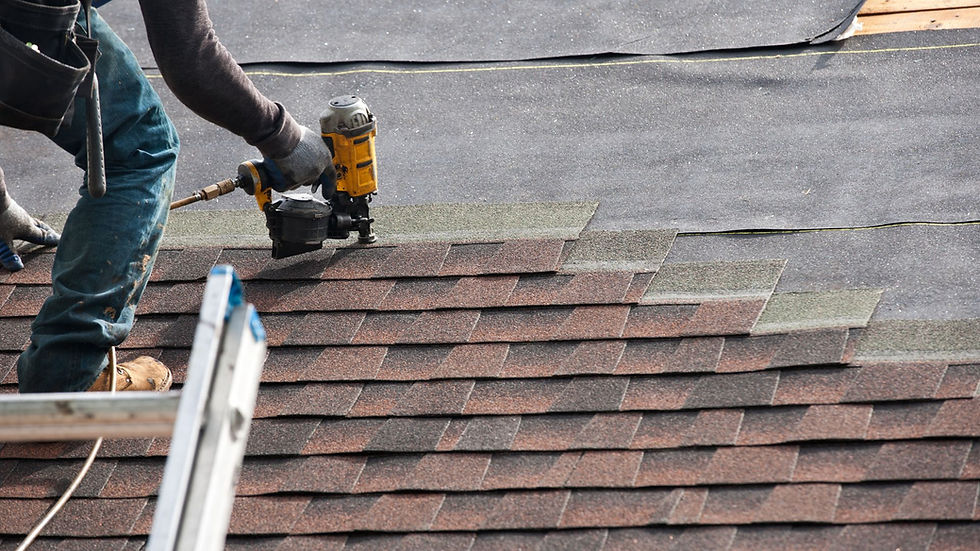What is Your Roof Made of?
- Rainy Day Exteriors

- Jan 15, 2024
- 3 min read

The roof on your home in Gig Harbor, Port Orchard, or Tacoma protects your home from the elements and helps keep the weather outside. And while it's easy to see that shingles are part of a roof, your roof is a complex system made of several components. Let’s talk about what makes up a roof.
Roof Decking
The roof decking is the base layer of the roof that is installed over the roof's structural framing. It is usually made of wood or oriented strand board (OSB) and provides a solid surface for the roofing materials to be applied. The decking is important because you need a base that is strong enough to support the weight of the roofing materials and any additional weight that may be placed on the roof.
Underlayment
The underlayment is a layer of material that is placed over the roof decking before the roofing material is installed. It serves as a secondary layer of protection against water penetration. The most common types of underlayment used in residential roofing are asphalt-saturated felt and synthetic underlayment. Synthetic underlayment is becoming more popular due to its durability and resistance to moisture.
Flashing
Flashing is a material used to seal and protect the roof against water penetration at the intersections of different planes. Flashing is typically made of metal, such as aluminum or galvanized steel, and is installed around chimneys, vents, skylights, and other protrusions in the roof.
Drip Edge
A drip edge is a metal flashing that is installed at the edges of the roof to prevent water from seeping under the roofing material and into the fascia board. The drip edge helps to direct water away from the fascia board and into the gutters.
Roof Ventilation
Proper roof ventilation is essential for maintaining a healthy roof system. Ventilation helps to regulate the temperature and moisture levels in the attic space, which can help to prevent damage to the roof and reduce energy costs. The two main types of roof ventilation are ridge vents and soffit vents.
Learn more about why ventilation is important in this recent blog: Why Roof Ventilation is Important.
Ridge Cap
The ridge cap is the peak of the roof where two sloping sides meet. It is usually made of the same material as the roofing material and serves as a protective layer against water penetration at the highest point of the roof.
Gutters and Downspouts
Gutters and downspouts are essential components of any roof system. They help to collect and redirect water away from the roof and the foundation of the building. Gutters are installed along the eaves of the roof, and downspouts are attached to the gutters to direct water away from the building.
Shingles
The most common roofing material used in residential roofing is asphalt shingles. Shingles are made from a combination of asphalt, fiberglass, and ceramic granules. They come in a variety of colors and styles and are relatively easy to install.
Fascia
The fascia is the vertical board that runs along the edge of the roofline. It is typically made of wood or aluminum and serves as a finishing trim for the roof. The fascia board also helps to support the gutters and prevent water from penetrating the roof.
Soffit
The soffit sits under the fascia, along the underside of the roof, and is made of aluminum or vinyl. It covers your roof’s overhang that is created by the fascia and creates an aesthetically pleasing connection from your roof to your home. Your soffit prevents mold and mildew from developing on the underside of your roof. The design promotes air ventilation into the attic and allows the vents to draw moisture and heat away from your home. Soffits also work to keep pests out of your home. With just an exterior vent, birds or other pests can more easily access your attic.
The roof of your home is a fascinating system that works together to keep your home protected. If you're ready to get a new roof, give us a call. We can't wait to help you improve your home.









Comments